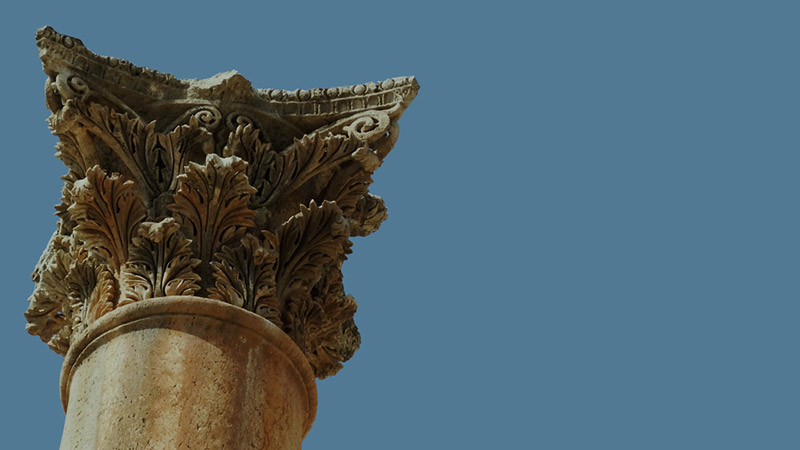More Results
Showing 12 of 128
Articles

The Jewish Revolts
The Jewish RevoltsJewish people of Jesus' day had a passionate desire for freedom from the domination of the pagan Romans and the oppressive Herod dynasty that had ruled them for many years. Revolt seethed continuously, mostly underground, for mor...
MORE
The Lord is my Shepherd
The WildernessWe may not want to face the wilderness, but the "rocks" of life are the very places where God often brings sweetness into our lives.Rugged wilderness covers much of Israel. The two most prominent deserts are the Judea Wilde...
MORE
The Salt of the Earth
The City of SardisLocated on Mount Tmolus in southern Turkey, the city of Sardis stood at the crossroads of Asia Minor, the most prosperous, powerful, fertile, and pagan province of the entire Roman Empire. First-century Sardis had a unique blend ...
MORE
The Time Had Fully Come
Qumran - The SiteThe wilderness community of Qumran served as home for the Essenes, a Jewish sect existing in Jesus' day.Qumran served as a study site for the Essenes, a Jewish sect existing in Jesus' day. Located at the edge of the Judea Wilderne...
MORE
They Left Their Nets Behind
They Left Their Nets BehindBefore Jesus' time, few Israelites were fishermen. There was only one Hebrew word for fish, and it covered everything from minnows to whales. In Jesus' time, a small, flourishing fishing industry developed around the Sea...
MOREEncyclopedia

The History of Jerusalem
2,000 BC- God sends Abraham to the area of Mount Moriah to sacrifice Isaac.1,000 BC- David captures Jerusalem, names it the City of David, and makes it his capital.950 BC- Solomon spends seven years building the temple, then spends thirty years bu...
MORE
The Mount of Olives
The Mount of Olives is 2,650 feet above sea level. The ridge is two miles long. Beyond the Mount of Olives is the Judea Wilderness. The Old Testament predicted that the Messiah would come from the east through the wilderness and would enter Jerusa...
MORE
The Seeds of Revolt
The Seeds of RevoltThe Seeds After the Romans began their occupation of Judea in 64 BC, the Jews became divided on how to respond.The religious leaders, particularly the Pharisees, believed the Messiah would come from the Jewish people and make Is...
MORE
The Theater at Caesarea
Herods' love of Hellenistic culture and his desire to introduce it to the Jewish nation is illustrated clearly by the theater at Caesarea. Apparently, this structure was built outside the city because its obscene and bawdy performances may have cr...
MORE
Theater of Sepphoris
This photograph shows the remains of Sepphoris today. This glorious city, on a hilltop in Galilee, is slowly being uncovered by archaeologists. The name Sepphoris is the Greek translation of the Hebrew Zippori, which means "bird." Accord...
MORE
Theaters
More than any other person, Herod the Great was responsible for bringing the theater to Israel.His campaign to make humanistic Hellenism the worldview of his people included building theaters at Caesarea, Jericho, Jerusalem, Samaria, and Sidon. Ma...
MOREGlossary

Tiberias Definition
Capital built by Herod Antipas on the Sea of Galilee's western shore; named for Tiberias Caesar. Believed to be built over a cementary and considered unclean by religious Jews. After AD 70, it became a center of Jewish religious thought.
MORE

















